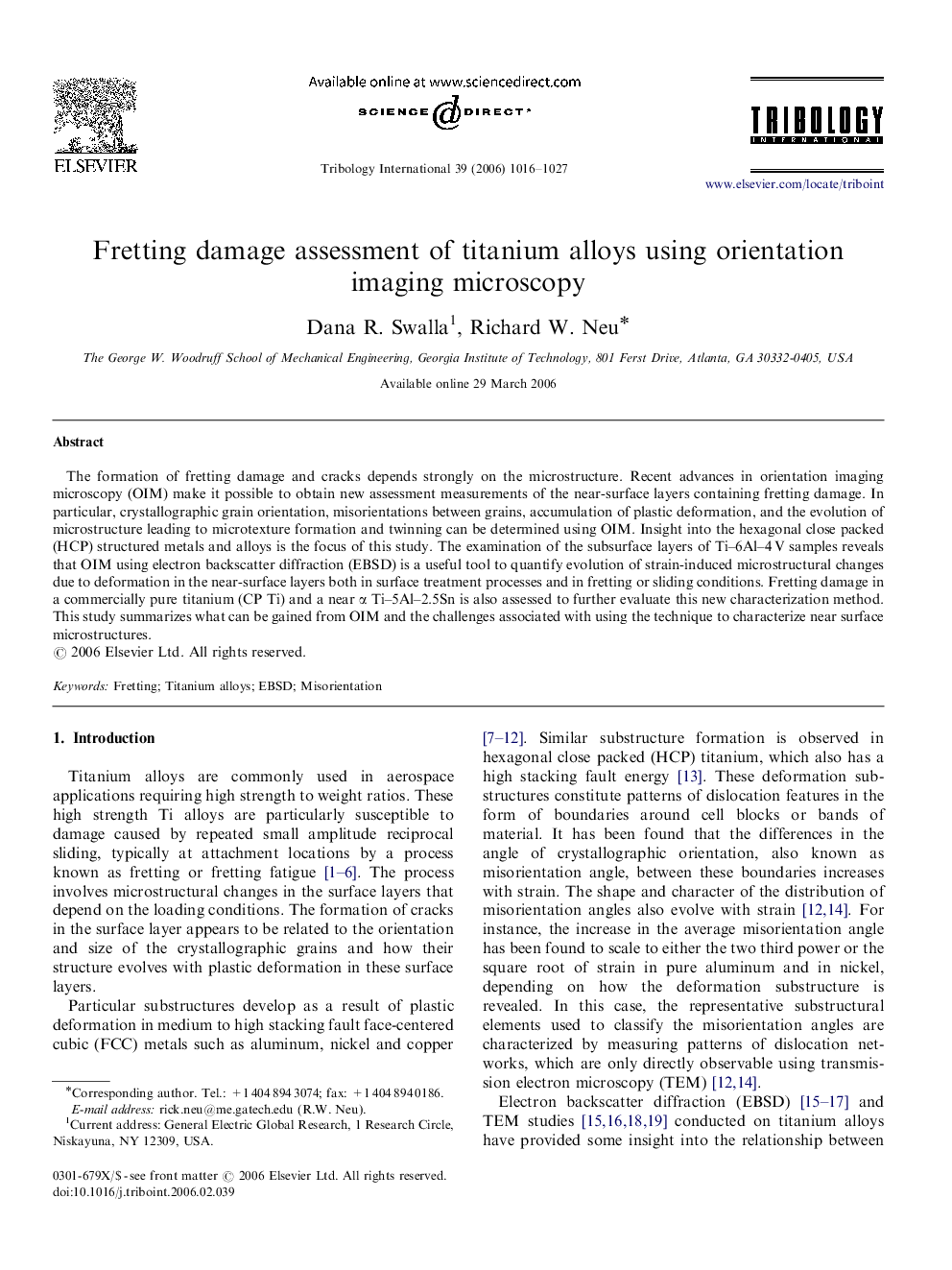| Article ID | Journal | Published Year | Pages | File Type |
|---|---|---|---|---|
| 616713 | Tribology International | 2006 | 12 Pages |
Abstract
The formation of fretting damage and cracks depends strongly on the microstructure. Recent advances in orientation imaging microscopy (OIM) make it possible to obtain new assessment measurements of the near-surface layers containing fretting damage. In particular, crystallographic grain orientation, misorientations between grains, accumulation of plastic deformation, and the evolution of microstructure leading to microtexture formation and twinning can be determined using OIM. Insight into the hexagonal close packed (HCP) structured metals and alloys is the focus of this study. The examination of the subsurface layers of Ti-6Al-4 V samples reveals that OIM using electron backscatter diffraction (EBSD) is a useful tool to quantify evolution of strain-induced microstructural changes due to deformation in the near-surface layers both in surface treatment processes and in fretting or sliding conditions. Fretting damage in a commercially pure titanium (CP Ti) and a near α Ti-5Al-2.5Sn is also assessed to further evaluate this new characterization method. This study summarizes what can be gained from OIM and the challenges associated with using the technique to characterize near surface microstructures.
Related Topics
Physical Sciences and Engineering
Chemical Engineering
Colloid and Surface Chemistry
Authors
Dana R. Swalla, Richard W. Neu,
